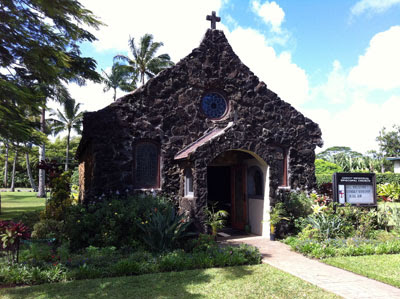Cartier and America Exhibition
San Francisco's Palace of the Legion of Honor has been host to some incredible decorative arts exhibits over the past decade. Starting with the Victoria & Albert Museum's collection - A Grand Design - in 1999, to the fabulous Art Deco, 1910-1939 in 2004, then Masterpieces of French Jewelry in 2007 and Artistic Luxury: Fabergé, Tiffany, Lalique earlier in 2009, the Legion of Honor has earned a place as America's premiere decorative arts venue. Now the museum has pulled together over 200 pieces of glitz, glamour and grandeur to present the recently opened Cartier and America.
The House of Cartier started in Paris back in 1847 by Louis-Francois Cartier. His grandson, Louis Cartier expanded the business further in the late 19th century and into the 20th century. He led the firm in new directions and conceived new inventions in clocks, watches and jewelry. By the early 1900s, it was clear that Cartier's clientele were worldwide, including European royalty, American heiresses and, later, Hollywood elite. Cartier opened branches in London in 1904 and New York in 1909. The New York business was run by Louis' son, Pierre Cartier.
When I think of Cartier images of Beaux Arts and Art Deco diamond jewelry, as well as superb watches, come to mind. This exhibit has changed those images forever. True, Cartier avoided the Art Nouveau movement in the late 1900s, preferring to stay with their successful Louis XVI designs of garlands and swags, mainly utilizing flashy white diamonds set in platinum. But then, Cartier became a trendsetter of Art Deco jewelry and accessories, and they never looked back.
The 1920s and 1930s saw the introduction of splashes of color, exotic designs, and much more gold jewelry. During the war years of the 1940s, Cartier supported the French Resistance, planting hints of political statements in some of the stock pieces that were made in those years. One example was the Bird in a Cage pin, that symbolized the captivity of the French by the Nazis. When the war ended, Cartier made the Free Bird Brooch, symbolizing the return of freedom for France.
Louis Cartier is credited by some with the invention of the wristwatch. Actually, wristwatches were already around when Louis Cartier made the now famous Santos Watch. In 1904 Cartier made a watch to be worn on the wrist for Brazilian aviator Alberto Santos-Dumont. The aviator had complained of the difficulty of using a pocket watch while flying. The introduction of this watch captured the attention of Parisien aristocracy who quickly accepted the new concept. A few years later, Cartier contracted with watchmaker Edmond Jaeger to make watches exclusively for Cartier. Cartier soon became the leading watch maker in the world.
Cartier produced wonderful gold enameled boxes, desk clocks and vanity accessories. One invention that is truly amazing is the mystery clock. So named because the hands of the clock seem to float unattched in the middle of the clock face. The first of these remarkable pieces was made in 1913 and took over a year to manufacture. The watch's hands are imbedded in thin layers of crystal that are driven by clockworks hidden in the periphery of the clock. The mystery clock is to Cartier what the jeweled egg is to Faberge.
Throughout the last hundred years, Cartier has worked with clients who have special ideas and sometimes special pieces - jewels, figurines and other small objets de arts - which they want incorporated into new pieces by Cartier. They also altered or remade pieces for clients as their tastes or circumstances changed. One marvelous line of clocks, designed to resemble Shintu temple gates, utilized ancient Asian carved jade figurines as their central motif.
One of the core themes of this exhibition is dedicated to the people that owned or commissioned these beautiful jewelry suites. Cartier has been described as the "king of jewelers and jeweler to kings." There is no arguing with that! Royalty were always high on the list of Cartier's clientele. Russian czarina's loved his jewelry and Wallis Simpson, the Duchess of Windsor, received many Cartier pieces from her husband, the former King Edward VIII. Grace Kelly wore the Cartier engagement ring given to her by Monaco's Prince Rainier in her last movie, High Society, in 1955. The 10-carat emerald-cut ring set off a high demand for emarald-cut diamonds in ensuing years.
The move to open the New York branch of Cartier was driven by the fact that so many wealthy American heiresses were patrons of the firm. Marjorie Merriweather Post, Barbara Hutton and Daisy Fellowes were among them. Fellowes is shown here wearing the famous Cartier tutti-frutti necklace.
After the devastation of the Great Depression, the clientele took a turn toward the Hollywood elite, who remained faithful Cartier customers throughout the 20th century. Elizabeth Taylor had her famous Hope diamond re-cut by Cartier. Her Cartier collection included numerous pieces given to her by Richard Burton as well as this dazzling ruby and diamond suite presented to her by Michael Todd.
Gloria Swanson wore these platinum, diamond and rock crystal bangles in the movie Sunset Boulevard.
Maria Felix, the exotic Mexican actress, also had exotic taste in jewelry. It is said that she walked in to the Cartier design studio with a baby alligator and requested that they design her a necklace in the shape of the reptile. They did. The necklace can also be made into two separate bracelets. This multi-use jewelry design was another hallmark of Cartier.
The exhibit continues at the Palace of the Legion of Honor in San Francisco through April 18th, 2010. It is well worth the visit. Here is a small gallery of some of the other pieces shown in the exhibit.























Comments
Post a Comment